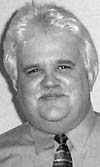
Surveys
Awards
DJC.COM
March 25, 2004
The roots of Washington's new building code
Pielow Fair Associates

Pielow
|
The first written building code is generally credited to Hammurabi, who ruled Babylon around 2000 B.C. Although incredibly brief by today's standards, it was highly effective. The code essentially declared that if a building collapsed and killed the owner, the builder would be killed.
Washington's new code
In 2003, Governor Locke signed into law a bill directing the Washington State Building Code Council to base the next version of the Washington State Building Code on the International Building Code. The council reviewed comments and analysis provided by its technical advisory groups and the public to issue final statewide amendments in December 2003.
The new 2003 code will become effective in July 2004. Local jurisdictions are allowed to amend the state code and many hope to have final rules in place before July.
Code development history
Codes have evolved tremendously in the past 4,000 years. What started out as several paragraphs has become over 800 pages. And that doesn't even begin to count the standards adopted by reference in the code. Building codes in the New World appeared as early as colonial Jamestown, where roof and chimney construction was specified to prevent burning down the entire settlement.
The first widely used building codes in the United States were developed to keep cities' entire central business districts from being destroyed. Many major cities had “Great Fires.” Some even had more than one. Chicago, Boston and San Francisco are frequently remembered for their conflagrations.
Even Seattle has a famous fire. The Great Seattle Fire of 1889 started at First and Madison and eventually consumed 66 square blocks of downtown before being extinguished.
The current Seattle Building Code still contains references to the “fire district,” an area of high value, the highly concentrated central business district. Occupancies and construction types were regulated within the fire district to prevent catastrophic fires.
As fire departments and building technology developed, the goals of the codes went from saving the city to confining the fire to one block. One block lead to one building, to one floor and eventually, the codes aim to prevent any loss of life from fire.
Model codes
Building codes generally have three goals. These are life safety, providing a reasonably safe platform for fire department operations, and property protection.
Four model building codes have historically served the United States. The first model code was the National Building Code, first published in 1905. That code was developed by the fire insurance industry and was therefore highly geared to property protection.
In 1927, the International Conference of Building Officials published the first Uniform Building Code (UBC). The UBC was used primarily throughout the western United States and was traditionally the basis for the Washington State Building Code.
The Southern Building Code Congress International first published the Standard Building Code in 1945. That code was used primarily in the southeastern areas of the country.
The BOCA Basic Building Code was first published in 1950 by the Building Officials and Code Administrators International and used predominately in the northeast areas.
The insurance industry eventually phased out of the code writing business. BOCA purchased the rights to the name National Building Code, which is reflected in the later editions of the BOCA code (known as the BOCA/National Building Code).
In addition, the National Fire Protection Association (NFPA) was formed and promulgated fire safety standards regulating building construction and fire safety systems. The first NFPA Life Safety Code was published in 1912, heavily influenced by the 1911 Triangle Shirtwaist Factory fire in New York where 146 textile workers lost their lives because of inadequate and locked exits.
Code consolidation
Efforts to make the codes more consistent started as early as 1949 with the Model Code Standardization Council. The most effective effort was the Council of American Building Officials (CABO), formed in 1972. CABO is widely known for its One and Two Family Dwelling Code used in most parts of the country.
The model code groups worked for years to make the codes more uniform.
Users of the UBC saw the greatest change in the 1994 edition, where the format was totally changed and many of the requirements changed. “Exiting” changed from Chapter 33 to Chapter 10, “Fire Protection” from Chapter 38 to Chapter 9, and “High rise” from Section 1807 to Section 403. What many UBC users did not realize is that the drastic changes brought the UBC into the same basic format as the other two codes.
With the three codes now structured basically the same, the final block was laid for the creation of the single code. The three model code groups merged and published their inaugural code as the 2000 edition of the International Building Code. The combined group became the International Code Council.
Sprinkler tradeoffs
The codes have historically allowed reductions in areas of fire resistive construction when a building was protected with automatic fire sprinklers. Sprinklers are specially designed nozzles installed within the ceilings of buildings. The heat from a fire causes a sprinkler head to open and release water that is sprayed over the fire area.
The effectiveness of sprinklers has a long and successful history. NFPA has maintained statistics for many years indicating no fires involving multiple loss of life in buildings with a working sprinkler system.
The International Building Code continues, and even expands upon, the theory of allowing reductions in fire safety requirements when a building is sprinklered. Corridors in most occupancies, except residential, do not require a fire resistive rating. Exit travel distances greatly increase. Exit stair and door widths decrease by one-third or more. Fewer elevator lobbies are required and stairway vestibules for high-rise buildings are no longer required. The requirements for smoke control for individual high-rise floors and two-story covered mall buildings have also been deleted.
The future
The codes will continue to evolve to address the hazards that impact safe building occupancy, whether they be from new materials and processes used in building construction, new information developed on seismic and other natural disaster potentials, or threats posed by those with criminal intent.
Bob Pielow, PE, is a registered fire protection engineer and a principal with Pielow Fair Associates, a building code consulting and fire protection engineering firm.
Other Stories:
- Spiking costs shadow construction market
- Beware of vulnerabilities during construction
- Construction industry struggles to accept ISD
- Government takes a shine to alternative bids
- New laws have yet to stem tide of condo suits
- Sleep and safety make sound partners
- WSU students train for the Solar Decathlon
- An ACE in the hole for high schoolers
- Do you know who your successor is?
- Six ways to keep your customers happy
- How ergonomics can fatten the bottom line
- More training needed for crane operators
- Shattering the myth of wired glass
- Want big profits? Make yours a high-trust company
- Equipment costs don't have to break the bank
- Listen up workers: act quickly on hearing loss
- In a lawsuit? Who's paying the lawyers?
Copyright ©2009 Seattle Daily Journal and DJC.COM.
Comments? Questions? Contact us.